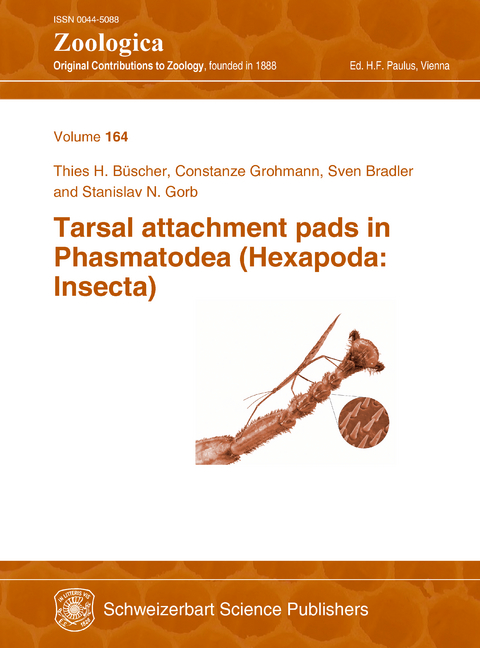Tarsal attachment pads in Phasmatodea (Hexapoda: Insecta)
Seiten
2019
Schweizerbart'sche, E. (Verlag)
978-3-510-55051-7 (ISBN)
Schweizerbart'sche, E. (Verlag)
978-3-510-55051-7 (ISBN)
The authors present the first extensive comparative study of the tarsal morphology of stick and leaf insects or Phasmatodea. The tarsi of 116 repre sentative species are examined using scanning electron microscopy and described in detail, with particular focus on their attachment devices. Attachment devices with different surface micro-structures evolved on the tarsi of insects, and previous biomechanical studies have shown for a few species that different types of the microstructure have different attachment properties. As the mesodiverse stick and leaf insects are distributed worldwide and exhibit several distinct ecological preferences, this lineage might serve as a model for evolutionary scenarios and to assess possible correlation between the species’ ecology and tarsal morphology. Therefore the studied species were chosen from all subfamilies currently recognised within Phasmatodea covering the entire range of biogeographic distribution to investigate the relationship between the attachment microstructure and the ecological preferences and/or oviposition techniques. In addition, one species of Embioptera (webspinners), which is assumed to be the sister group of the Phasmatodea, is examined. An impressive diversity of the attachment pad microstructures is observed in stick insects which can be classified into twelve types, seven of which were previously unknown. The distribution of these types among the selected taxa is discussed in context of ecology, habitat and phylogeny of stick and leaf insects and suggests a high dependence on the ecological background of the species. Additionally, two different ancestral character states of these structures are discussed for stick and leaf insects, which need to be corroborated in future phylogenetic studies. The functional relevance of all microstructures is discussed and the attachment properties of the different microstructural types are evaluated based on previous studies of similar structures in other insect groups and artificial model systems. This study is of interest to biologists interested in biological attachment systems, functional morphology, as well as the evolution, ecology and morphology of Phasmatodea. Furthermore, this monograph features a comprehensible description of the tarsal morphology of a high number of phasmid species, generously illustrated with high resolution scanning electron microscopy images, and therefore is a substantial reference work for future researchers working on this character system.
| Erscheinungsdatum | 27.06.2019 |
|---|---|
| Reihe/Serie | Zoologica ; 164 |
| Sprache | englisch |
| Maße | 230 x 310 mm |
| Gewicht | 500 g |
| Themenwelt | Naturwissenschaften ► Biologie ► Zoologie |
| Naturwissenschaften ► Geowissenschaften ► Geologie | |
| Schlagworte | Ecology • Entomology • Evolution • Functional morphology • phasmid • stick and leaf insect |
| ISBN-10 | 3-510-55051-X / 351055051X |
| ISBN-13 | 978-3-510-55051-7 / 9783510550517 |
| Zustand | Neuware |
| Haben Sie eine Frage zum Produkt? |
Mehr entdecken
aus dem Bereich
aus dem Bereich




